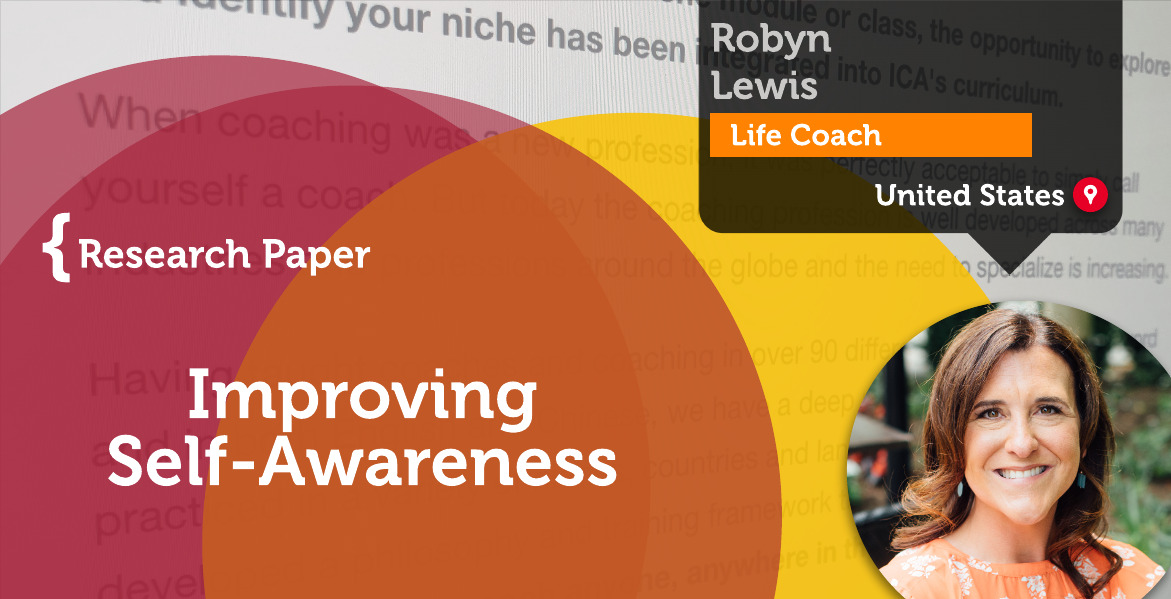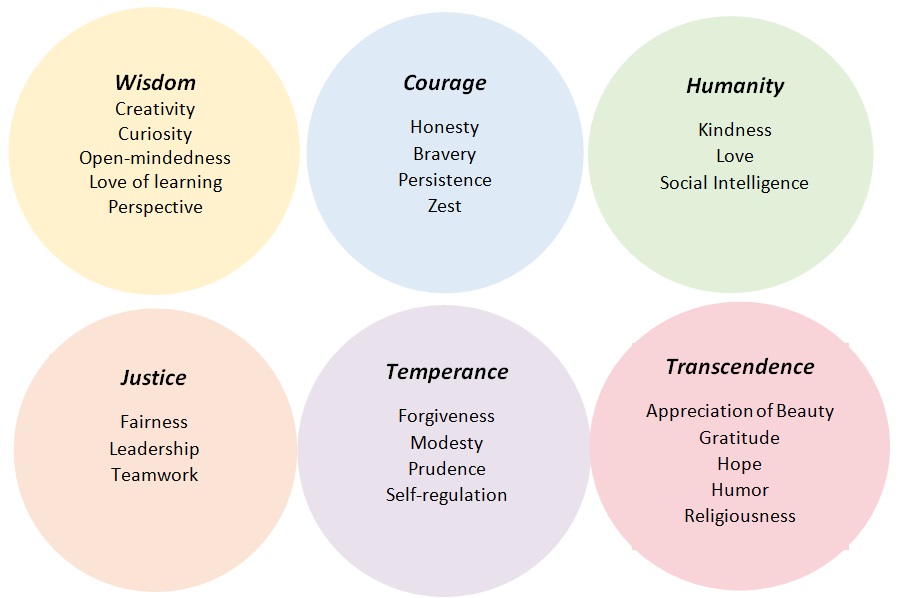A Research Paper By Robyn Lewis, Life Coach, UNITED STATES

The list of reasons could be endless but, one of the best places to start is to look within and become aware of it all. Become aware of the actual situation. Become aware of what may, or may not, need to change. Become aware of the internal resources that already exist within. Become aware of our thoughts, our emotions, and our behaviors. Become aware of how all those things affect our ability to move forward. And become aware of what we can really do to move forward.
Kelly Miller of PositivePsychology.com shares,
Being self-aware and practicing daily reflection and introspection allows each of us the opportunity to find what we really want out of this precious life. We are all susceptible to outside influence and personal bias. Without self-awareness, we are even more susceptible. When one can accomplish self-mastery through a deep understanding of the internal self and the public self through the attainment of true self-awareness, real freedom can be achieved. (Miller, 2020)
Miller highlights six benefits to self-awareness as:
- Perspective-taking
- Self-control or improved self-regulation
- Increased creative achievement
- Higher self-esteem
- Higher level of pride
- Increased habit change
Undeniably, benefits are abundant in improving self-awareness. So where to begin? Applied in the context of coaching, there is a multitude of useful tools or strategies to consider when the desired goal is to improve self-awareness. Those same tools and strategies can also be a helpful starting point for those clients who are unsure of where to begin when facing a goal or for those who may find themselves a bit stuck along the way.
Some tools and strategies are assessment-based and some are more geared towards supportive actions or mechanisms. For purposes of this discussion, we will examine four different types of tools or strategies that encourage self-awareness: Wheel of Life, Values In Action (VIA) Assessment, Values Identification, and Journaling. Although quite different from one another, each provides a unique perspective in helping to improve awareness and can be extremely useful for coaches and their clients.
Improving Self-Awareness in Wheel of Life
The Wheel of Life exercise is widely used in coaching and beyond and offers a practical and flexible tool for clients to assess their needs and set goals aligned with their core values. The original idea behind the Wheel of Life came from industry pioneer Paul J. Meyer in the 1960s to help people realize their goals(Sutton, 2020).
It provides an opportunity to evaluate the level of satisfaction within each segment, highlighting areas that may be out of balance with the whole picture of life. Achieving balance is essential but our own lack of conscious awareness of what is actually “out of whack” can hold us back from creating a meaningful plan to rebalance. The Wheel of Life intends to create a type of self-reflection that will allow space for exploration – ultimately bringing awareness to what is desired and what needs to change to achieve that greater balance. It also lays down the groundwork for goal setting, encouraging the exercise of analyzing current reality while also visualizing desired reality.

Clients are shown a Wheel of Life, such as in the example below, and asked to rate each segment, or “slice,” of their life on a scale of 1-10 by shading in the respective number of rings for each segment. Examples may vary but in general, there are 8-10 segments included on a Wheel of Life. These segments are geared to depict the essential components of a fulfilling life. Once all segments have been rated, the shading provides visual clarity of which areas of life are truly off balance. That clarity, or awareness, can help to prioritize which areas need attention and help identify where action plans would be most effective.
VIA (Values In Action) Assessment
Identifying and understanding our character strengths can bring upon powerful realizations that can help capitalize on what makes us the best version of ourselves. Shining a spotlight on the positive core personality traits that describe our unique identity can remind and reintroduce ourselves to what makes us feel genuine and engaged. The goal behind the VIA assessment is to identify and focus on core strengths rather than detect weakness or perceived disadvantage. The VIA assessment can vary in length, anywhere from 96-240 questions, with the results categorized into 24-character strengths which are then organized under six broad virtues – wisdom, courage, humanity, justice, temperance, and transcendence.
These 24-character strengths were first studied and identified by Dr. Martin Seligman and Dr. Neil Mayerson. “Typically, those who use a character strength inventory look for ways to identify and use these 24-character strengths in a person’s life. Then, they help them build on these strengths to improve their lives and their emotional well-being as well as address the challenges and difficulties they are facing.” (Gordon, 2020)
The notion of identifying and focusing on character strengths aligns with the theory, or science, of Positive Psychology. In the simplest of terms, Positive Psychology is the science behind what is going right with someone or the science of their overall well-being. “A convention in positive psychology is to consider the top 5 strengths on the VIA Survey to be “signature strengths.” Research has revealed that some people have less than 5 and many people have more than 5 signature strengths. The most important criterion in considering whether a character strength is a signature, or not, is whether the strength is essential and “core” to who the person is.” (VIA FAQs, 2021)
Below is an illustration of the six broad virtues and their respective twenty-four-character strengths:

Improving Self-Awareness in Identifying Values
Our values are subconsciously embedded into every aspect of our lives. They guide our emotions and frame our responses; they are present in our actions and are displayed through our behaviors. Our values are core to our ethics and morals, our own internal and authentic operating system.
Whether personal, professional, social, or life-oriented, values make room for knowledge, wisdom, and heightened self-realization. They are unique and individualized. We all choose different combinations of values in life, and these choices shape our actions and life decisions. Clarifying values is a great way to prioritize our life goals and understand what we truly desire to become(Chowdhury, 2021).
There are numerous questionnaires and assessments available to assist in identifying personal and core values. Depending on the client’s specific needs, some tools may be more beneficial than others. For example, a more focused tool that may provide a deeper dive, such as Schwartz’s Personal Values Questionnaire (PVQ) which has separate male and female assessments, may be more applicable depending on the client(Chowdhury, 2021). For purposes of this paper, we will discuss some simplified, broader ways of identifying values that can also begin to achieve a successful level of awareness.
In Meg Selig’s article, “6 Ways to Discover and Choose Your Core Values,” she offers the following various options(Selig, 2018):

Journaling
Journaling can be a powerful tool in the context of developing a practice of self-awareness. For some, the act of journaling can simply be a cathartic exercise. A simple, private way of expelling emotion or thoughts. The process of documenting these entries can also benefit by keeping our thoughts organized, setting goals, tracking progress, brainstorming, relieving stress, and even providing a creative outlet.
The practice of journaling can, however, help to unlock a deeper level of awareness. The process allows us to literally write our own story. In doing so, space is created for the exploration of subconscious emotion where no one, except our inner self, is present to respond, reflect or evaluate. It is in that exploration that certain levels of awareness may be created, potentially yielding the ability to see situations differently, problem solves, or process our learnings.
Some clients may identify journaling as a support mechanism in reaching their overall desired goal. Others may have the act of journaling as an actual goal itself. How journaling can be a useful strategy is endless and the benefits are plentiful. Yet, even with all those positive, at times the blank page can seem daunting. In these situations, where perhaps our minds feel either too overwhelmed to start the ink flowing, or completely bone dry and devoid of where to begin, prompts can be helpful. Below is a brief excerpt of prompts to spark self-discovery, offered by Eric Sangerma of Wholistque (Sangerma, 2020):
- How are you feeling today?
- Complete this sentence and then keep writing: “I got where I am today because I am ____.”
- Name three people you admire. Do they know you admire them? How did they change your life?
- What are your main coping mechanisms? Are they serving you well?
- Complete this sentence and then keep writing: “I spend too much time on ____.”
- What would a perfect day look like for you?
- Write a letter to your body. It’s up to you to decide on the tone — is it a letter of congratulations, an apology, a letter of complaint? When you reread it, does it feel like a letter to a friend?
- If you use social media, describe the ways each platform impacts your day. What are the upsides and downsides of spending time online? If you don’t use any social media, do you ever feel like it’s missing from your life?
Practicing self-awareness is a life-long habit that strengthens through continuous attention. The deliberate process of thinking about, reflecting on and then applying those learnings to our emotions, actions, and behaviors is a skill. And like other life skills, it is something that needs continuous practice to serve us best. It is not an easy habit to cultivate but the benefits far outweigh the work involved. Although this discussion touched on four different tools and strategies to cultivate self-awareness, coaches and clients are encouraged to explore further resources to determine what may work best for their situation.
References
Miller, K. Top 11 Benefits of Self-Awareness According to Science. PositivePsychology.com. https://positivepsychology.com/benefits-of-self-awareness/
Sutton, J. How to Apply the Wheel of Life in Coaching. PositivePsychology.com. https://positivepsychology.com/wheel-of-life-coaching/
Gordon, S. What Are Character Strengths? [online] VeryWellMind.com. https://www.verywellmind.com/what-are-character-strengths-4843090
VIA FAQs. [online] viacharacter.org https://www.viacharacter.org/faq
Chowdhury, M. The 3 Best Questionnaires for Measuring Values. https://positivepsychology.com/values-questionnaire/
Selig, M. 6 Ways to Discover and Choose Your Core Values. https://www.psychologytoday.com/us/blog/changepower/201811/6-ways-discover-and-choose-your-core-values
Sangerma, E. The Ultimate List of Self-Discovery Journaling Prompts. https://medium.com/the-happy-human/the-ultimate-list-of-self-discovery-journaling-prompts-8e3296b0b662